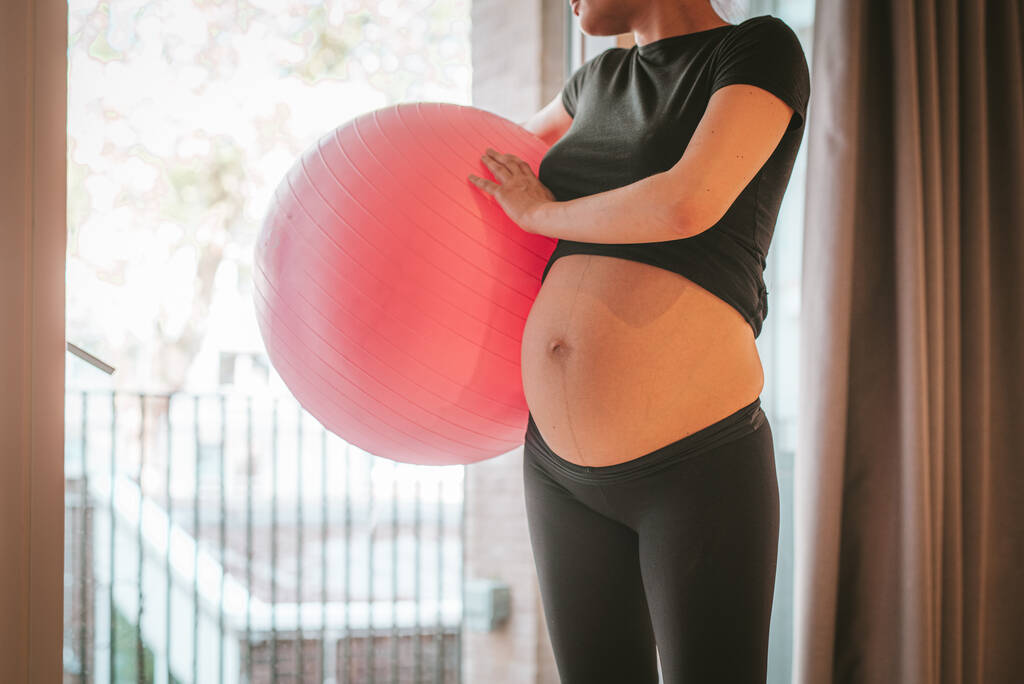Learn about the potential risks and precautions associated with low-impact aerobics during pregnancy.
Understanding the Risks of Low-Impact Aerobics During Pregnancy
It’s common knowledge that exercise is a crucial part of a healthy lifestyle, but what happens when you’re expecting? Many women wonder if they can continue their exercise routine during pregnancy. In particular, low-impact aerobics have gained popularity among expectant mothers. Though it may seem safe, it’s essential to understand the risks associated with low-impact aerobics during pregnancy. Let’s dive into the details and explore why caution is advised.

Defining Low-Impact Aerobics
Before we delve into the risks, let’s clarify what low-impact aerobics actually entail. Unlike high-impact exercises that involve vigorous movements, low-impact aerobics are gentler on your joints and focus on minimizing stress on your body. From dance-inspired workouts to water aerobics, there are various forms to choose from. Now that we have a basic understanding of what low-impact aerobics are, let’s proceed.
Key Characteristics of Low-Impact Aerobics
Low-impact aerobics share a few common characteristics that make them an appealing choice for pregnant women. Firstly, they involve continuous rhythmic movements that elevate the heart rate, improving cardiovascular fitness. This means that not only are you getting a good workout, but you are also improving the health of your heart and lungs. Secondly, these exercises typically incorporate gentle stretching, enhancing flexibility and preventing muscle tightness. This is especially important during pregnancy, as the body undergoes various changes that can lead to discomfort and stiffness. Lastly, low-impact aerobics are designed to be low-intensity, minimizing the risk of injury. This is crucial for pregnant women, as the body is already under additional stress and strain.
When it comes to low-impact aerobics, the options are diverse and exciting. Many pregnant women opt for prenatal yoga, which combines gentle stretching with controlled breathing to promote relaxation and improve strength. Prenatal yoga not only helps to improve flexibility and muscle tone, but it also provides a sense of calm and tranquility, which can be beneficial during pregnancy. Another popular choice is swimming, as the water’s buoyancy provides a safe and supportive environment for exercising. Swimming is a full-body workout that engages multiple muscle groups while minimizing impact on the joints. It is also a great way to stay cool and refreshed during the hot summer months. Lastly, stationary cycling is an excellent low-impact aerobic exercise that enhances cardiovascular endurance without putting excessive strain on your joints. Cycling can be done indoors on a stationary bike or outdoors on a regular bicycle. It is a great way to get your heart rate up and burn calories without the risk of high-impact movements.
The Importance of Exercise During Pregnancy
Now that we’ve covered what low-impact aerobics are, let’s discuss why exercise is vital during pregnancy. Staying active during this crucial period offers numerous benefits for both you and your baby.
During pregnancy, your body goes through significant changes to accommodate the growing baby. These changes can lead to discomfort and various physical challenges. However, regular exercise can help alleviate some of these discomforts and improve your overall well-being.
One of the key benefits of staying active during pregnancy is the improvement in mood. Hormonal changes can sometimes lead to mood swings and feelings of anxiety or depression. Engaging in regular exercise releases endorphins, which are known as “feel-good” hormones. These endorphins can help boost your mood and reduce stress levels, promoting a sense of well-being.
In addition to mood improvement, exercise can also help reduce pregnancy-related discomforts, such as backaches and swelling. As your baby grows, your center of gravity shifts, putting extra strain on your back. Regular exercise can help strengthen your back muscles and improve posture, reducing the risk of backaches. Furthermore, exercise improves circulation, which can help reduce swelling in the legs and ankles.
Staying active during pregnancy also has long-term benefits for both you and your baby. Regular exercise enhances your stamina and endurance, which can be beneficial during labor and childbirth. It prepares your body for the physical demands of giving birth, making the process more manageable.
For your baby, exercise plays a crucial role in promoting optimal development. When you engage in physical activity, your heart rate increases, and more oxygen-rich blood is pumped to your baby. This increased blood flow supports your baby’s cardiovascular health and ensures a steady supply of nutrients and oxygen. Additionally, exercise stimulates the release of growth factors in your body, which can promote optimal brain development in your baby.
Recommended Types of Exercise for Pregnant Women
While the benefits of exercise during pregnancy are plentiful, it’s important to choose the right activities. Low-impact exercises, such as swimming, walking, and prenatal yoga, are generally recommended for expectant mothers. These exercises provide the desired health benefits without placing undue stress on your body.
Swimming is an excellent choice for pregnant women as it provides a full-body workout without putting pressure on your joints. The buoyancy of the water helps support your growing belly, making it a comfortable and safe exercise option. Additionally, swimming helps improve cardiovascular fitness and strengthens both your upper and lower body muscles.
Walking is another low-impact exercise that can easily be incorporated into your daily routine. It is a safe and effective way to stay active during pregnancy, as it doesn’t require any special equipment or training. Walking helps improve circulation, maintain a healthy weight, and strengthen your leg muscles.
Prenatal yoga combines gentle stretching, breathing exercises, and meditation to promote physical and mental well-being during pregnancy. It helps improve flexibility, balance, and posture, which can be especially beneficial as your body undergoes changes. Prenatal yoga classes are specifically designed for pregnant women, ensuring that the poses and movements are safe and suitable for your changing body.
However, it’s always prudent to consult with your healthcare provider before starting any exercise program. They can provide personalized recommendations based on your individual health and pregnancy circumstances.
Potential Risks of Low-Impact Aerobics in Pregnancy
While low-impact aerobics can be an excellent way to stay fit during pregnancy, there are a few potential risks that need to be considered. Understanding these risks and how they may affect your pregnancy is crucial for making informed decisions about your exercise routine.
During pregnancy, your body undergoes numerous changes to accommodate the growing baby. These changes can impact your physical abilities and increase the risk of certain complications. It’s essential to be aware of these potential risks and take necessary precautions to ensure the safety of both you and your baby.

Understanding the Physical Strains
One of the primary concerns with low-impact aerobics is the strain they can put on certain areas of your body. While these exercises are generally gentle on your joints and muscles, some movements may still pose a risk, especially as your body changes during pregnancy.
For example, deep squats or high leg lifts may stress your knees, hips, or lower back, which are already under increased pressure due to the weight of the baby. It’s important to listen to your body and modify exercises as necessary to avoid overexertion or injury.
Consulting with a prenatal fitness specialist or an experienced instructor can help you identify appropriate modifications for your low-impact aerobics routine. They can guide you in choosing exercises that are safe and effective while minimizing the risk of strain or injury.
Identifying the Hormonal Challenges
Pregnancy hormones can impact your joints and ligaments, causing them to become looser and more prone to injury. While low-impact aerobics are generally safe, sudden and excessive movements may put you at higher risk of sprains or strains.
It’s crucial to be mindful of your body’s limitations and avoid any exercises that involve jerky or abrupt movements. Instead, focus on smooth and controlled motions that maintain stability and minimize the risk of injury.
Additionally, incorporating exercises that improve flexibility and balance can help strengthen your joints and reduce the risk of strains or sprains. Prenatal yoga or gentle stretching routines specifically designed for pregnant women can be beneficial in maintaining joint stability and preventing injuries.
Remember, every pregnancy is unique, and what works for one woman may not work for another. It’s important to consult with your healthcare provider before starting or continuing any exercise routine during pregnancy. They can provide personalized guidance based on your individual circumstances and ensure that you are engaging in activities that are safe for you and your baby.
Safety Measures for Low-Impact Aerobics During Pregnancy
Now that we’ve discussed the potential risks associated with low-impact aerobics during pregnancy, let’s explore some safety measures to ensure a healthy and enjoyable exercise routine.
During pregnancy, it’s important to prioritize the safety of both you and your baby. Low-impact aerobics can be a great way to stay active and maintain your fitness level, but it’s crucial to take certain precautions to minimize any potential risks.
Precautions Before Starting an Exercise Regime
Before jumping into any exercise program, it’s essential to consult with your healthcare provider. They will assess your overall health and provide tailored recommendations based on your individual circumstances. This is especially important during pregnancy, as your body is undergoing significant changes.
Your healthcare provider will consider factors such as your medical history, any pre-existing conditions, and the stage of your pregnancy. Based on this information, they can guide you on the most suitable exercises and intensity levels.
If you were physically active before getting pregnant, your healthcare provider may suggest modifying your exercise routine rather than starting something entirely new. This can help you maintain your fitness level while ensuring the safety of both you and your baby.
Tips for Safe Aerobic Exercise
To make your low-impact aerobics sessions safer and more comfortable, keep the following tips in mind:
Firstly, make sure to warm up before exercising by gradually increasing your heart rate and gently stretching your muscles. This helps prepare your body for the workout and reduces the risk of injury. A warm-up can include light cardio exercises like brisk walking or marching in place, followed by some dynamic stretches.
Secondly, stay hydrated throughout your workout to prevent overheating and dehydration. Pregnancy increases your body’s need for water, so it’s important to drink plenty of fluids before, during, and after exercise. Carry a water bottle with you and take regular sips to stay hydrated.
Thirdly, listen to your body and modify or stop exercises if you experience any pain, dizziness, or shortness of breath. Pregnancy hormones can make your joints more flexible, increasing the risk of injury. If any exercise feels uncomfortable or causes discomfort, it’s best to modify or avoid it altogether. Always prioritize your comfort and safety.
Additionally, it’s important to wear appropriate footwear and clothing during your low-impact aerobics sessions. Choose supportive shoes that provide cushioning and stability to protect your feet and ankles. Opt for comfortable, breathable clothing that allows for unrestricted movement and helps regulate your body temperature.
Remember, every pregnancy is unique, and what works for one person may not work for another. It’s crucial to listen to your body and adapt your exercise routine as needed. If you have any concerns or questions, don’t hesitate to reach out to your healthcare provider for guidance and support.
Consulting with Healthcare Professionals
When it comes to navigating exercise during pregnancy, it’s essential to have a supportive network of healthcare professionals by your side.

Role of Doctors and Fitness Trainers
Your doctor plays a vital role in guiding your exercise routine during pregnancy. Ensure you keep them informed about the type and duration of your low-impact aerobics. Additionally, consider working with a fitness trainer who specializes in prenatal exercise. They can provide valuable guidance on modifying movements and creating a safe and effective workout program.
Importance of Regular Check-ups
Throughout your pregnancy, attending regular check-ups with your healthcare provider is crucial. These appointments allow them to monitor your overall health and the well-being of your baby. If you experience any discomfort or concerns related to your low-impact aerobics, be sure to discuss them during your appointments.
Conclusion
While low-impact aerobics can be an excellent way to stay active during pregnancy, it’s important to understand the potential risks involved. By following the safety measures discussed in this article, consulting with healthcare professionals, and listening to your body, you can enjoy the benefits of low-impact aerobics while minimizing any potential disadvantages. Remember, every pregnancy is unique, so it’s always best to seek personalized advice from your healthcare provider to ensure a safe and healthy exercise routine.



